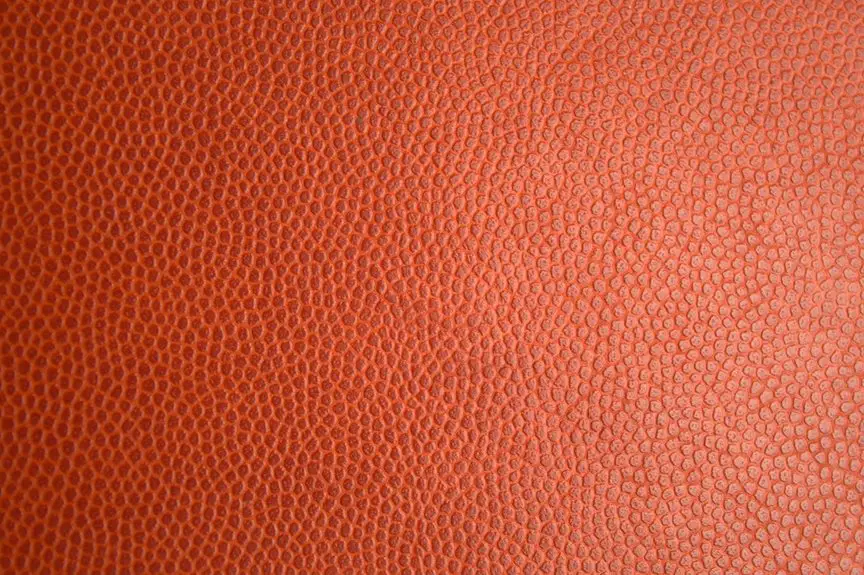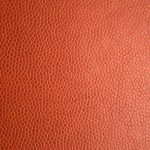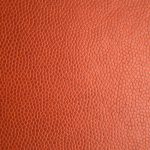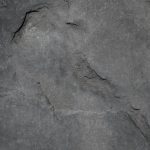Ultrahyde is a durable faux leather made from a blend of polyurethane and polyester, giving you the look and feel of real leather without the cost or animal use. It resists scratches, stains, and moisture, making it easy to maintain and long-lasting. You’ll find it in furniture, car interiors, and fashion accessories, offering style and performance. If you want to know how it compares to genuine leather and tips for care, keep exploring this versatile material.
Table of Contents
Key Takeaways
- Ultrahyde is a durable, water-resistant faux leather made from polyurethane and polyester fabrics with a leather-like finish.
- It offers strong scratch resistance, stain protection, and color retention, suitable for daily wear and various applications.
- Ultrahyde is cruelty-free, avoiding animal hides and requiring less environmental resources than genuine leather production.
- It is easier to maintain than real leather, needing only mild soap, water, and occasional conditioning.
- Commonly used in automotive interiors, furniture upholstery, and fashion accessories for its stylish, modern look.
What Is Ultrahyde Made Of?
Although Ultrahyde looks and feels like genuine leather, it’s actually made from high-quality synthetic materials designed to mimic leather’s texture and durability.
Ultrahyde offers the look and feel of leather using advanced synthetic materials for lasting durability.
When you touch Ultrahyde, you’re feeling a blend of polyurethane (PU) and polyester fabrics. This combination gives Ultrahyde its soft yet strong nature. The polyester base provides flexibility and breathability, while the polyurethane coating offers water resistance and a leather-like finish.
Unlike traditional leather, Ultrahyde doesn’t rely on animal hides, making it a cruelty-free choice. You’ll also appreciate its consistency—no natural imperfections here.
Plus, it’s easier to clean and maintain, so it holds up well to daily use. When you choose Ultrahyde, you’re getting a material crafted to balance style, comfort, and practicality.
How Ultrahyde Is Manufactured
To understand how Ultrahyde is made, you’ll want to look at the raw materials involved and the key steps in its production process.
It starts with selecting high-quality polymers and fabrics that form the base.
Then, these materials go through specific treatments and finishes to achieve that leather-like texture and durability.
Raw Materials Used
When you look closely at Ultrahyde, you’ll find it’s crafted from a blend of synthetic materials designed to mimic genuine leather’s texture and durability.
These raw materials give Ultrahyde its unique feel and strength, making it a popular choice for furniture and upholstery. You’ll mainly find:
- Polyurethane (PU) – provides flexibility and a smooth surface
- Polyester fabric – acts as a sturdy base layer
- Plasticizers – add softness and pliability
- Pigments and dyes – give color and enhance realism
Together, these components create a durable, easy-to-clean material that closely resembles real leather without the environmental and ethical concerns.
Understanding these raw materials helps you appreciate Ultrahyde’s balance of style, comfort, and sustainability.
Production Process Steps
Since Ultrahyde combines multiple synthetic components, its production involves several precise steps to confirm quality and durability.
First, manufacturers blend polyurethane with a polyester fabric base to create a strong, flexible layer.
Next, this composite material undergoes coating, where a textured finish mimics genuine leather’s grain.
You’ll notice controlled drying and curing processes follow, which lock in the material’s resilience and appearance.
Afterward, Ultrahyde is treated with protective topcoats that resist stains and wear.
Finally, stringent quality checks confirm consistent thickness, color, and texture before the material ships out.
Key Features and Benefits of Ultrahyde
You’ll appreciate Ultrahyde’s impressive durability and strength that stand up to everyday wear.
Its texture and appearance closely mimic real leather, giving your items a stylish, high-quality look.
Plus, you’ll find maintenance and care simple, making it a practical choice for your lifestyle.
Durability and Strength
Durability stands at the core of Ultrahyde’s appeal, making it an ideal choice for everyday use. When you choose Ultrahyde, you’re investing in a material designed to withstand daily wear and tear without losing its integrity.
Its strength guarantees longevity, so your furniture or accessories stay looking good longer. Ultrahyde resists cracking, peeling, and fading, which means less maintenance and fewer replacements for you.
Here’s why its durability stands out:
- Strong resistance to scratches and abrasions
- Waterproof surface that repels spills
- Flexibility that prevents cracking under stress
- Retains shape and strength even after extended use
With Ultrahyde, you get a tough, reliable faux leather that keeps up with your lifestyle effortlessly.
Texture and Appearance
Ultrahyde captures the rich look and feel of genuine leather, giving your furniture and accessories a sophisticated edge.
You’ll notice its smooth, supple surface mimics real leather’s natural grain, offering a visually appealing texture that adds depth to any piece. Unlike some faux leathers, Ultrahyde avoids the plastic-like shine, presenting a matte finish that feels soft to the touch without being sticky or overly slick.
This material maintains a consistent appearance with vibrant color options, allowing you to match your décor effortlessly.
Whether you’re updating a chair or a handbag, Ultrahyde’s realistic texture and natural look help you achieve elegance without sacrificing style or comfort.
It’s an ideal choice when you want the look of leather with modern versatility.
Maintenance and Care
Although faux leather often raises concerns about upkeep, caring for Ultrahyde is surprisingly simple and hassle-free. You don’t need special cleaners or treatments to keep it looking fresh.
Just follow a few straightforward steps, and your Ultrahyde items will stay in great shape for years. Here’s how you can maintain and care for Ultrahyde:
- Wipe spills immediately with a soft, damp cloth to prevent stains.
- Avoid harsh chemicals or abrasive cleaners that can damage the surface.
- Keep Ultrahyde away from direct sunlight and heat sources to prevent fading or cracking.
- Dust regularly with a microfiber cloth to maintain its smooth texture and appearance.
Comparing Ultrahyde to Genuine Leather
When you compare Ultrahyde to genuine leather, you’ll notice key differences in texture, maintenance, and cost.
Ultrahyde offers a smooth, consistent surface without the natural imperfections you find in genuine leather. It’s softer to the touch but lacks the unique grain and aging character of real leather.
Maintenance-wise, Ultrahyde is easier to clean and more resistant to stains and fading, so you won’t need special conditioners or cleaners. Genuine leather requires regular care to stay supple and can develop cracks over time.
Cost is another big factor—Ultrahyde is generally more affordable, making it a budget-friendly alternative without sacrificing style.
If you want durability and low upkeep, Ultrahyde fits well, but if you value authenticity and natural texture, genuine leather remains unmatched.
Common Uses of Ultrahyde in Various Industries
You’ll find Ultrahyde in furniture upholstery, giving sofas and chairs a stylish yet durable finish.
Car interiors also benefit from its sleek look and easy maintenance.
Plus, it’s a popular choice for fashion items like bags and jackets that combine style with practicality.
Furniture Upholstery Applications
Ultrahyde’s versatility makes it a popular choice for furniture upholstery across many industries. When you pick Ultrahyde, you get a durable, easy-to-clean material that mimics genuine leather without the high cost or maintenance.
Whether you’re furnishing a home, office, or commercial space, Ultrahyde adapts seamlessly to your needs. Here are common furniture upholstery applications where Ultrahyde shines:
- Residential sofas and chairs for a stylish, pet-friendly option
- Office seating offering professional looks with durability
- Restaurant booths and bar stools that resist spills and wear
- Healthcare facility furniture providing easy sanitation and comfort
With Ultrahyde, you get a practical, attractive upholstery solution that stands up to daily use while maintaining its look.
Automotive Interior Uses
Anyone looking to upgrade their vehicle’s interior will find Ultrahyde an excellent choice. This durable faux leather material offers a sleek and modern look while standing up to daily wear, spills, and sun exposure.
You can use Ultrahyde for car seats, door panels, and dashboard covers, giving your vehicle a revitalized, high-end appearance without the cost or maintenance of genuine leather. It’s also easy to clean—just wipe away dirt or spills with a damp cloth.
Plus, Ultrahyde resists fading and cracking, so your interior stays looking new longer. Whether you’re revitalizing an older car or customizing a new ride, Ultrahyde provides a practical, stylish, and budget-friendly option for automotive interiors that won’t disappoint.
Fashion and Accessories
Beyond automotive interiors, Ultrahyde has made a significant mark in fashion and accessories.
If you’re looking for stylish, durable alternatives to genuine leather, Ultrahyde offers the perfect blend of appearance and performance. You’ll find it used widely to create products that look luxurious without the high cost or ethical concerns.
Here are common ways Ultrahyde enhances your fashion and accessory choices:
- Handbags and wallets that resist wear and tear
- Stylish jackets and outerwear offering comfort and durability
- Footwear that combines flexibility with a sleek leather look
- Belts and watch straps that maintain their shape and finish over time
Choosing Ultrahyde lets you enjoy fashionable items that last longer and stay looking great.
Durability and Performance of Ultrahyde
When you choose Ultrahyde, you’re selecting a material designed to withstand daily wear and tear without losing its appeal. It offers excellent resistance to scratches, stains, and fading, making it ideal for furniture, car interiors, and accessories. Ultrahyde’s water-resistant surface also allows easy cleaning, so spills won’t cause lasting damage. Plus, it maintains flexibility and softness over time, avoiding cracks and peeling common in lower-quality faux leathers.
| Feature | Performance |
|---|---|
| Scratch Resistance | High – withstands daily abrasion |
| Stain Resistance | Excellent – easy to clean |
| Color Retention | Strong – resists fading |
| Flexibility | Maintains softness and suppleness |
| Water Resistance | Protects against moisture damage |
Ultrahyde delivers durability without sacrificing comfort or style.
Environmental Impact of Ultrahyde
Although synthetic materials like Ultrahyde often raise environmental concerns, this faux leather offers several advantages that reduce its ecological footprint compared to traditional leather.
When you choose Ultrahyde, you help lessen the environmental burden associated with animal farming and leather tanning, which can be resource-intensive and polluting.
Here’s why Ultrahyde can be a greener choice:
- Uses fewer natural resources like water and land than animal leather production
- Avoids harmful chemicals used in traditional leather tanning
- Often manufactured with recyclable or less toxic materials
- Generally produces less greenhouse gas emissions during production
While it’s not completely impact-free, Ultrahyde offers a more sustainable alternative if you want stylish, durable leather without the heavy environmental cost.
Cleaning and Maintenance Tips for Ultrahyde
Taking care of Ultrahyde is easier than you might think, and a few simple cleaning steps can keep it looking fresh and new. Regularly wipe down Ultrahyde surfaces with a damp cloth to remove dust and spills. Avoid harsh chemicals; mild soap and water work best. For stains, gently blot rather than rub to prevent damage. Conditioning isn’t usually needed, but you can use a product designed for faux leather if you want to maintain softness.
| Cleaning Step | Tips |
|---|---|
| Dusting | Use a soft, dry cloth |
| Wiping | Mild soap + water, gentle wipe |
| Stain Removal | Blot stains immediately |
| Conditioning | Use faux leather conditioner |
Styling Ideas With Ultrahyde Products
If you want to elevate your space with a modern touch, Ultrahyde offers versatile styling options that suit various aesthetics. You can refresh furniture without committing to real leather, adding sophistication with easy-to-clean durability.
Here are some ideas to inspire you:
- Use Ultrahyde for sleek dining chairs to create a chic, minimalist vibe.
- Incorporate Ultrahyde throw pillows or ottomans to add texture and comfort.
- Choose Ultrahyde-upholstered headboards for a bold bedroom statement.
- Mix Ultrahyde with natural materials like wood or metal to balance warmth and edge.
These ideas let you experiment with style while enjoying faux leather’s practical benefits.
Whether your taste is contemporary or classic, Ultrahyde adapts seamlessly.
How to Choose the Right Ultrahyde for Your Needs
How do you find the perfect Ultrahyde that fits your style and needs? Start by considering the product’s purpose.
For heavy-use items like furniture, choose a durable, thicker Ultrahyde with strong stitching to guarantee longevity. If you want a fashion accessory, prioritize texture and color that match your personal style.
Check for easy maintenance features, especially if you have kids or pets. Also, examine the material’s breathability and flexibility for comfort.
Don’t forget eco-friendliness if sustainability matters to you. Finally, assess your budget—Ultrahyde offers a range of price points, so balance quality with cost.
Frequently Asked Questions
Can Ultrahyde Cause Skin Allergies or Irritation?
You might experience skin irritation or allergies with Ultrahyde if you’re sensitive to synthetic materials or chemicals used in its production. Always test a small area first to see how your skin reacts before prolonged contact.
Is Ultrahyde Safe for Use in Children’s Products?
Worried about safety in kids’ products? Ultrahyde is generally safe, non-toxic, and durable, but you should still check for any specific certifications and watch for allergies. Wouldn’t you want to guarantee your child’s comfort first?
How Does Ultrahyde React to Extreme Weather Conditions?
Ultrahyde handles extreme weather pretty well; it resists cracking in cold and fading in sunlight. Still, you should avoid prolonged exposure to harsh conditions to keep it looking great and lasting longer.
Are There Any Known Health Risks From Ultrahyde Off-Gassing?
You shouldn’t worry much about Ultrahyde off-gassing; it’s designed to be low in harmful chemicals. Still, if you’re sensitive, ventilate your space well to minimize any minor odors or reactions.
Can Ultrahyde Be Recycled or Repurposed After Use?
Recycling Ultrahyde isn’t a walk in the park since it’s a synthetic blend. However, you can repurpose it creatively—think DIY projects or upholstery—to give it a second life instead of tossing it in the trash.
- Does Chiffon Fabric Stink - July 15, 2025
- Does Chiffon Fabric Affect the Economy - July 15, 2025
- Does Cotton Fabric Have a Nap - July 15, 2025







